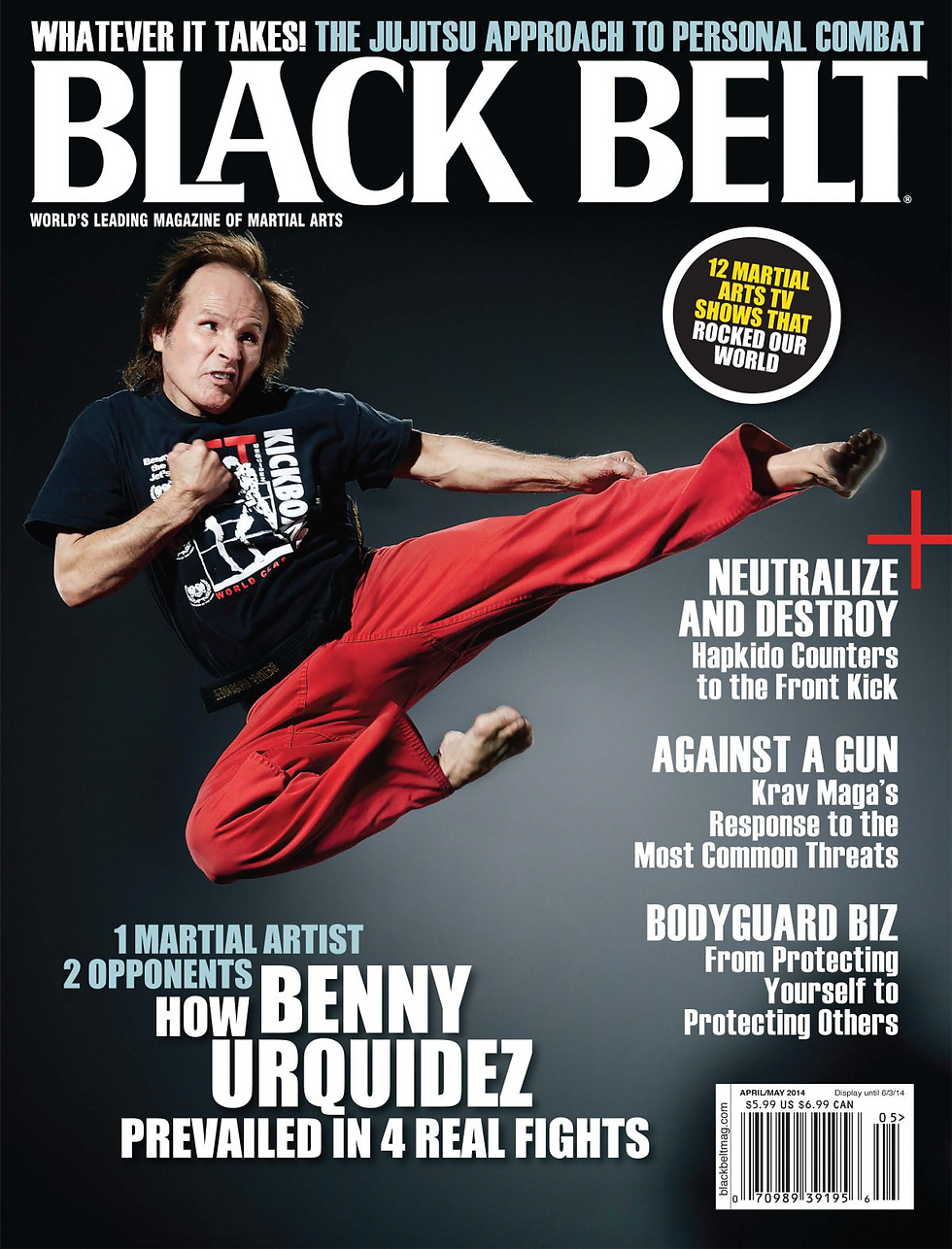- Julius Melegrito
- Dec 16, 2024
- 7 min read

Attack is imminent, you're ready with a stick strategy – and then life gets in the way!
As a practitioner of arnis—or any other stick-based martial art—you devote a ton of time to training, especially to fine-tuning your offense. It's totally understandable because, after all, who doesn't want to be the first to land a clean, precise stick strike in a self-defense encounter that could turn deadly at any moment?
But what happens when your opponent does something that takes you by surprise? What if he shoots in for a takedown before you have a chance to strike?
What if he grabs your stick before you can even start swinging it? Or worse, what if you drop your weapon?
What happens when the attacker deploys his own weapon and brings it into the conflict before you can start using yours?
Worst of all, what happens when any of these scenarios play out in a real-world altercation, where rules and restraint are not part of the picture?
Outside the Box
In Filipino martial arts, we often practice box drills with sticks. A box drill is a series of repeated, choreographed strikes, locks, and counters.
While box drills are good for developing technique—and should be practiced regularly to build muscle memory—they can degenerate into never-ending cycles of moves that are repeated ad nauseam, because there’s no definitive finish. As such, they don’t represent the optimal way to prepare for a real fight.
As you know, real fights are chaotic and messy, which means they need to be ended quickly. They often involve eye gouges, "dirty boxing," knives, and other unexpected elements.
If you’re a striker, you might feel comfortable on your feet with your opponent at a distance. But what happens when he unexpectedly rushes towards you with a punch aimed at your face? If you're a grappler, you might feel comfortable being taken to the ground, but what happens when your attacker pulls out a pocket knife and starts slashing?
Only by training differently—outside the box—can you fine-tune your physical and mental skills for all the alternatives. The drills you engage in should contain ballistic “what-ifs” that teach you how to deal with the unexpected. Only by doing that can you learn how to respond with purpose, which is very different from simply reacting without a plan.
Plan of Action
Presented here are four real-world scenarios in which something unexpected occurs. That “X factor” crops up in a way that prevents you from executing the technique you had planned.
Although the scenarios feature a stick as the defender’s weapon, these same techniques could apply to other implements—such as a police-style baton, a gun, a pocket knife, or even a flashlight or an umbrella.
And by using the same concepts (with slight modification to the technique), the lessons can be adapted to empty-hand combat. In fact, to maximize your versatility, it's crucial to practice with a variety of weapons.
If your primary concern is self-defense but your time is limited, focus on using items you normally carry. A shiny katana might look impressive in a demo, but you're unlikely to have one at your disposal when you're walking down the street.
Scenario 1: Attacker Attempts a Takedown

The Scenario: A potential assailant confronts you. He’s sufficiently threatening to make you deploy a weapon—in this case, a stick. Before you have a chance to raise it to strike, the man dives in for a takedown.
The Solution: Immediately counter with a popping downward strike, a move that looks like a block but isn’t. Because you're holding the ends of the stick, use the shaft to hit the attacker’s outstretched arms. It’s a non-traditional technique in the eyes of FMA stylists, but it can cause enough discomfort to take him down.
Follow up with the same strike delivered to the base of the attacker's skull. That will surely put him down. Once he’s on the ground, you know you've avoided the grappling encounter, and that means you have a moment to analyze the situation while maintaining a safe distance. If the assailant is not yet out of commission, you can initiate a finishing blow.
The Side Note: Takedowns can be fast. Your choice of targets—whether the aggressor’s arms or skull—depends on his relative positioning at the moment of truth. The technique will be effective in either case.
If necessary, the popping strike can be used as you sprawl on top of an opponent who’s being pushed down, in which case the strike benefits from the downward force of your body weight.
Scenario 2: Attacker Grabs Your Weapon

The Scenario: Watching a video of public unrest around the world, there's a good chance you'll see a situation in which a police baton is grabbed by an aggressive suspect before the officer can use it. The bad guy then unleashes a series of punches designed to incapacitate the cop. Such a strategy can also be used against you in self-defense situations.
The Solution: Once the opponent grabs your stick and starts throwing punches, use the stick as a defensive barrier rather than immediately struggling to regain control. Grab the other end of the weapon with your empty hand and use it as a shield against his punches.
If he’s persistent and throws a kick, you can block it, too, using the shaft of the stick. If the aggressor is still holding the stick after you repeatedly maneuver it to block his blows, you need to execute a release. One example involves twisting the weapon, pushing it down, and pulling it away to break free of his grasp.
With the stick under your control, use the punyo (butt end) to strike his temple. If necessary, subdue him with a choke.
The Side Note: In the Philippines, it's common for police to hold a baton in front of their bodies. This tactic is designed to create distance but can also encourage people to grab the weapon. Grabbing a cop’s baton is considered an attack, meaning the officer can legally employ a variety of techniques to control, strike, or take down the suspect.
In contrast, police in the United States and some other countries are taught to keep the baton—and other weapons—behind them while using their empty hand to create distance.
Scenario 3: Attacker Makes You Lose Your Weapon

The Scenario: You’re facing an opponent who happens to be fast—fast enough to dart in and take you to the ground. That’s enough to make you drop your weapon in the process.
The Solution: Your immediate priority is self-preservation. That likely means using your arms to shield your face and perhaps your forearms to protect your forehead—you don’t want any punches to land while you’re in this position. Your next priority is to visually locate your dropped weapon (assuming it fell nearby).
If it’s within arm’s reach, you’ll need to deflect one of his blows and trap a limb or two to create space to retrieve the stick. As shown in the photo sequence, use the arm that trapped the punch to grab the man’s neck and pull him close. Then execute a close-range punyo strike to his temple. Maintaining your hold on his head, plant your right foot and lift your hip while driving another punyo strike into his temple.
The stick strikes should weaken him sufficiently for you to flip him. This will leave you in an offensive position, from which you can gouge his eyes or continue to pound his temple.
The Side Note: It’s essential to be aware of where you roll your attacker. You don’t want to move them close to the weapon you dropped, because then he could use it against you. Although the scenario depicted here involves a stick, it would be even more devastating if it was a knife or a gun, and the opponent managed to get control of it.
Scenario 4: Attacker Deploys a Weapon First


The Scenario: The severity of the threat causes you to deploy a stick for self-defense. Unfortunately, your opponent manages to get the jump on you with his bludgeon.
The Solution: As soon as the opponent swings, create distance by sliding backward. With your body out of range, you can deal with the club that was just swung in front of you. Close the gap by stepping forward with your stick held in both hands, making it a superior blocking tool for his next attack.
Use your left forearm to make contact with the attacker’s hand to reduce the momentum of his swing—which is essential if he’s using a heavy implement like a baseball bat. Your left hand is close to his face, so it makes sense to initiate a quick eye gouge and then regrasp your stick.
Because he’s still close, you can drive a punyo strike into his face. As before, the temple makes an ideal target.
The Side Note: The blocking technique used in this scenario is suportado. It involves supporting the stick with your free hand. The extra support means the block is sturdy enough to absorb a lot of force.
If you possess sufficient speed and timing, you might be able to step in and get close enough to meet the attacking hand instead of blocking the stick. The theory is that the closer you get to the source of the power, the safer it is to intercept the attack, because the angular velocity of the point of contact is reduced.
Translation: the closer you are, the less force it takes to stop the swing, and it doesn’t damage your hand. That kind of win-win situation is what stick fighting is all about.
Photography by Peter Lueders
Julius Melegrito operates Martial Arts International in Bellevue, Nebraska. He is the creator of Stix 4 Kids, Philippine Combatives, and Sandata System. A seventh-degree black belt in Filipino martial arts and a fourth-degree black belt in Tang Soo Do/Taekwondo, he serves as the stick and knife director for the International Combat Hapkido Federation. Melegrito is the founder of the Philippine Martial Arts Alliance, with affiliated schools in Australia, Russia, and the USA.





























































































